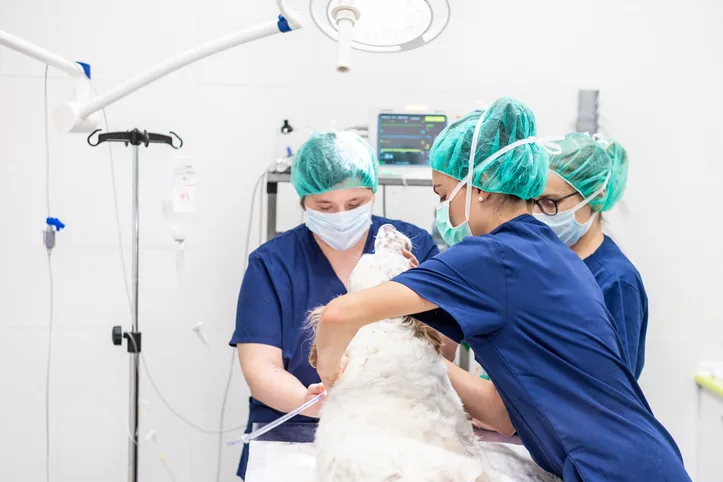
In the Literature
Davidow EB, Owen T, Rishniw M. Knowledge and attitudes towards surgical safety checklists: a survey of veterinary professionals. J Am Vet Med Assoc. 2023;261(5):1-9. doi:10.2460/javma.22.09.0405
The Research …
Surgical safety checklists (SSCs) commonly involve safe surgical practices, including team introductions and confirmation of patient identity, procedure to be performed, antibiotic administration, and completion of the procedure. These checklists are typically completed by a member of the operating team prior to and following a surgical procedure to help reduce postoperative complications. Surgery-associated errors are the most common type of errors reported in veterinary medicine.1,2 Use of the World Health Organization SSC is common in human medicine and has been associated with decreased complication rates and in-hospital deaths.3 SSCs may also promote communication in the operating room. Surgical teams that foster a team environment are less likely to experience complications and may have a lower patient mortality rate compared with those with less teamwork.4-6
This study aimed to determine knowledge and use of SSCs in different areas of veterinary medicine. An online survey was distributed to small animal clinicians who perform surgery; results were compiled from 1,235 respondents in the United States and Canada.
Most clinicians reported they do not use an SSC. Use of an SSC correlated with consistent performance of safe surgical practices, and 66% of respondents believed the checklist had prevented a medical error or complication. Although a greater proportion of clinicians working in specialty settings or university hospitals reported using SSCs compared with other practice settings, only 52% of clinicians in this group used SSCs consistently. Most respondents who did not use an SSC were unaware of their existence.
The authors concluded that SSCs can decrease complications and mortality in any hospital setting and there is little, if any, cost associated with their use.
… The Takeaways
Key pearls to put into practice:
A 3-part SSC may include preinduction, preincision, and postoperative check-ins with the surgical team.
Creating a wall chart of the SSC and performing safe surgical practices verbally in the operating room may increase compliance with checklist use and be more efficient than using paper forms. Safe surgical practices typically include introductions; confirmation of patient identity, procedure to be performed, surgical site, and critical/nonroutine parts of procedure; and time for the anesthetist to disclose anesthetic concerns.
Involving staff in the design and implementation of SSCs can help the team feel a sense of ownership and responsibility that may encourage consistent use of SSCs.
Nontechnical portions of SSCs (eg, introductions, confirmation of procedure and surgical site) are important for open communication, teamwork, and situational awareness that may help team members feel comfortable voicing concerns during a procedure.
You are reading 2-Minute Takeaways, a research summary resource proudly presented by Clinician’s Brief. Clinician’s Brief does not conduct primary research.